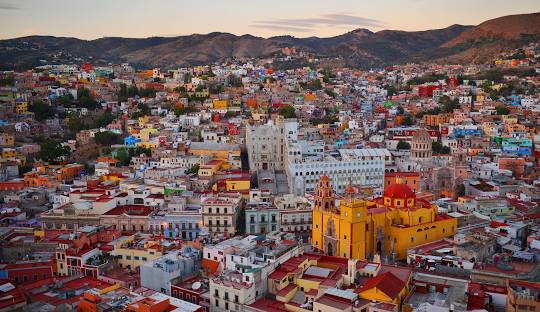Guanajuato, Mexico
🎨 Guanajuato, Mexico – A Labyrinth of Color, Culture, and Colonial Charm
Overview:
Nestled in the heart of central Mexico, Guanajuato is a vibrant city of winding alleyways, Baroque churches, and pastel-colored houses tumbling down the hillsides. A UNESCO World Heritage Site, Guanajuato is a place where history and artistry blend seamlessly with bohemian spirit and youthful energy. Once a silver mining capital, today it dazzles visitors with its romantic atmosphere, lively plazas, and cultural richness.
🌟 Top Attractions in Guanajuato
-
Teatro Juárez: An architectural marvel with ornate Moorish columns and a majestic interior. Catch a concert or just marvel at its design.
-
Alley of the Kiss (Callejón del Beso): This narrow alleyway comes with a tragic romantic legend. It’s a must-stop for couples and Instagrammers alike.
-
Museo de las Momias (Mummy Museum): Famous for its naturally preserved mummies from the 19th century. Macabre yet fascinating.
-
Basilica of Our Lady of Guanajuato: A stunning Baroque church with vibrant yellow facades and an important religious icon.
-
Alhóndiga de Granaditas: A former grain storage turned museum and fortress, it played a key role in Mexico’s War of Independence.
-
Pipila Monument: High above the city, this viewpoint offers sweeping views of Guanajuato's candy-colored skyline.
-
Diego Rivera House Museum: The birthplace of Mexico’s legendary muralist, showcasing his early work and personal artifacts.
🍴 Local Cuisine to Try
-
Enchiladas Mineras: A Guanajuato specialty created for miners—tortillas stuffed with cheese or chicken, topped with guajillo chili sauce and cheese.
-
Gorditas de Nata: A sweet, fluffy treat made with cream—often sold by street vendors.
-
Charamuscas: Traditional caramel figures, usually shaped like mummies or other local icons.
-
Atole & Tamales: Popular breakfast and street snacks, especially during festivals.
-
Tequila & Mezcal: While Guanajuato isn't Jalisco, its nearby agave fields still serve up excellent local spirits.
🏨 Where to Stay
-
Luxury: Hotel Boutique 1850 – A sleek, modern hotel set in a neoclassical building, right on Jardín de la Unión.
-
Mid-Range: Edelmira Hotel Boutique – Stylish rooms with balconies and a small spa, ideal for couples.
-
Budget: Hostal La Catrina – Friendly, colorful, and centrally located for backpackers and solo travelers.
🎭 Festivals & Events
-
Festival Internacional Cervantino (October): One of Latin America’s most prestigious arts festivals. It transforms the city into a living theater with music, dance, art, and performances from around the world.
-
Day of the Dead (November 1–2): Expect altars, parades, and vibrant decorations throughout the city.
-
Semana Santa: The Holy Week brings religious processions and cultural events to the streets of Guanajuato.
🧭 Best Time to Visit
-
October: Ideal for attending the Cervantino Festival and enjoying mild weather.
-
March–May: Dry season with warm days and fewer crowds.
-
June–September: Rainy season, though showers are usually short-lived and followed by sun.
💡 Travel Tips
-
Footwear: Bring comfortable shoes—the city’s steep cobblestone streets and alleyways are best explored on foot.
-
Navigation: Guanajuato's maze-like streets and underground tunnels can be confusing. Use Google Maps sparingly and ask locals when needed—they’re very friendly!
-
Cash: While cards are accepted in most restaurants and hotels, some smaller eateries and markets are cash-only.
-
Language: Basic Spanish goes a long way here. English is spoken in tourist areas, but less so in residential neighborhoods.
📸 Best Photo Spots
-
Panoramic View from Monumento al Pípila: For postcard-worthy shots of the colorful cityscape.
-
Teatro Juárez at dusk: The building lights up beautifully.
-
Callejón del Beso: A must for couples and travel storytellers.
-
The tunnels: Guanajuato’s underground streets are unlike anywhere else in the world.


